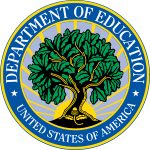Best Practices
The following section highlights select states with digital learning plans and provides a brief overview of each of these plans:
Indiana
The
Indiana Tech Plan provides a snapshot of where each corporation (district) is with regard to infrastructure and the integration of student technology in learning. Each district completes an
annual technology planning survey. Key components of the survey include: technology integration; infrastructure; platforms; virtual courses professional development; 1:1 status; devices; and funding. Indiana publishes the results of the survey at
Tech Plan Maps. Users can select a corporation to see a synopsis of their technology planning survey.
North Carolina
The
North Carolina Digital Learning Plan creates a long-term strategy that sets directions and priorities, supports innovation, and provides resources to enable educators and students to benefit fully from teaching and learning in the digital age. The plan also provides recommendations for state actions that will guide and support K-12 schools in this process. Key components of the plan are: technology infrastructure and devices; human capacity; content; instruction and assessment; local digital learning innovations; policy and funding; and regional and state support structures.
Utah
The Utah State Board of Education (USBE), Utah Education and Telehealth Network (UETN), the legislature and local school systems worked together to best leverage the power of technology for learning.
Utah’s Master Plan: Essential Elements for Technology Powered Learning provides a framework for implementing digital learning. Each element of the plan includes the rationale, state responsibilities and district responsibilities. Key sections are: professional learning, communication, infrastructure; digital devices, content and software; technical support; procurement; and funding.
Wisconsin
Wisconsin developed a comprehensive
digital learning plan for PK-12. Wisconsin adopted the Future Ready Framework as a way to organize key priorities and planning tools for districts. The Future Ready vision focuses on equitable, personalized, applied, and engaged digital learning for all students. The state encourages districts to consider the following areas when implementing their vision: instruction, learning and assessment; empowering, innovative leadership; technology & hardware; professional learning and building capacity; and data and privacy.Column content







The Facilitator Guide – Best Practices provides education leaders with the information and resources they need to conduct a professional learning session. Participants will:



